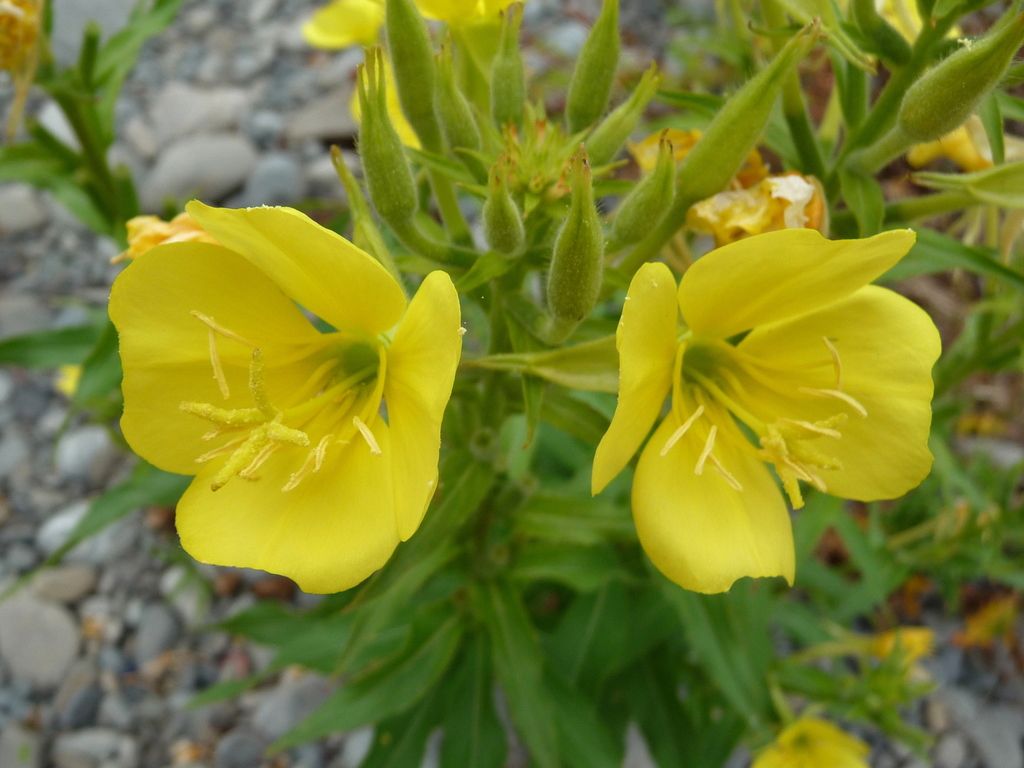Murdock'a Evening Primrose
(Oenothera murdockii)

Description
Oenothera murdockii, commonly known as Murdock's evening primrose, is a fascinating species of flowering plant belonging to the family Onagraceae. This delicate and ephemeral perennial herb is native to the southwestern United States, primarily found in the arid regions of Texas and New Mexico. Oenothera murdockii is renowned for its unique and captivating beauty, making it a prized addition to any wildflower garden or natural habitat restoration project. Description Murdock's evening primrose is characterized by its distinctive physical features, including its flowers, leaves, and overall growth habit. The plant typically reaches a height of about 20-60 centimeters (8-24 inches) and possesses a slender, erect stem. The lance-shaped leaves are alternately arranged along the stem and are covered with fine, silvery hairs, giving them a soft and velvety appearance. One of the most striking features of Oenothera murdockii is its beautiful flowers. The flowers are borne on long, slender stalks that arise from the leaf axils. Each flower has four showy, bright yellow petals, which are deeply notched at the tip, giving them a fringed appearance. The petals surround a central column of stamens and a four-lobed stigma, adding to the overall aesthetic appeal of the flower. The flowers typically open in the evening and fade by the next morning, giving rise to the common name "evening primrose." Habitat and Distribution Oenothera murdockii thrives in arid and semi-arid habitats, particularly in sandy or gravelly soils. It is commonly found in grasslands, prairies, desert scrublands, and disturbed areas. The species is native to the Chihuahuan Desert region, which spans parts of Texas, New Mexico, and northern Mexico. In its native range, Oenothera murdockii plays an important ecological role as a source of nectar for pollinators and as a food source for various herbivores. Cultivation and Propagation Due to its unique beauty and adaptability, Oenothera murdockii has gained popularity among plant enthusiasts and wildflower gardeners. Cultivating this species can be a rewarding endeavor, both in a controlled garden setting and for habitat restoration purposes. Here are some guidelines for successful cultivation and propagation: Growing Conditions: Murdock's evening primrose thrives in full sun to partial shade. It prefers well-drained soils with low to moderate fertility. Sandy or gravelly soils, reminiscent of its native habitat, are particularly suitable. Planting: Seeds of Oenothera murdockii can be sown directly in the garden during the spring or fall. Prior to sowing, scarification (light scratching of the seed coat) or stratification (exposing the seeds to a period of cold) may enhance germination rates. Alternatively, potted plants obtained from a reputable nursery can be transplanted into the desired location. Maintenance: Once established, Murdock's evening primrose requires minimal maintenance. Regular watering during dry spells is beneficial, but the plant is generally tolerant of drought conditions. Deadheading spent flowers can prolong the blooming period and encourage continuous flower production. Pruning is generally not necessary, as the plant maintains an attractive form on its own. Pests and Diseases: Oenothera murdockii is generally resilient to pests and diseases. However, like many plants, it can be susceptible to aphids or snail damage. Regular monitoring and appropriate pest management measures, such as insecticidal soaps or organic pest control methods, can help mitigate any infestations. Propagation: Apart from growing from seeds, Oenothera murdockii can also be propagated through division or root cuttings. Dividing mature plants in early spring or late fall can yield new individuals, while taking root cuttings from healthy plants in early spring can be an effective means of propagation. Ecological Significance Oenothera murdockii plays a vital ecological role in its native range, as it provides essential resources for various organisms. The vibrant yellow flowers produce abundant nectar, attracting a diverse range of pollinators, including bees, butterflies, and hummingbirds. These pollinators, in turn, facilitate the cross-pollination necessary for the plant's reproduction. The plant's foliage serves as a food source for caterpillars of certain moth species, while the seeds are consumed by granivorous birds and small mammals. By providing food and habitat for these creatures, Oenothera murdockii contributes to the overall biodiversity and ecological balance of its native ecosystems. Conservation Status Oenothera murdockii is not currently listed as a threatened or endangered species. However, like many native plants, it faces challenges due to habitat loss and degradation. Encroachment by urban development, agriculture, and invasive plant species can disrupt the plant's natural habitats, limiting its ability to thrive. To ensure the long-term survival of Oenothera murdockii, it is crucial to conserve and restore its native habitats, protect biodiversity, and promote sustainable land management practices. Additionally, efforts to cultivate and propagate this species in gardens and restoration projects can contribute to its conservation by increasing its population and creating suitable habitats. Conclusion Oenothera murdockii, or Murdock's evening primrose, is an enchanting plant with its delicate beauty and captivating yellow flowers. Native to the arid regions of Texas and New Mexico, this perennial herb has become a favorite among wildflower enthusiasts and conservationists alike. Its adaptability, low maintenance requirements, and ecological significance make it an excellent choice for both garden cultivation and habitat restoration projects. By appreciating and protecting this unique species, we can contribute to the preservation of biodiversity and the natural heritage of our ecosystems.
Taxonomic tree:







